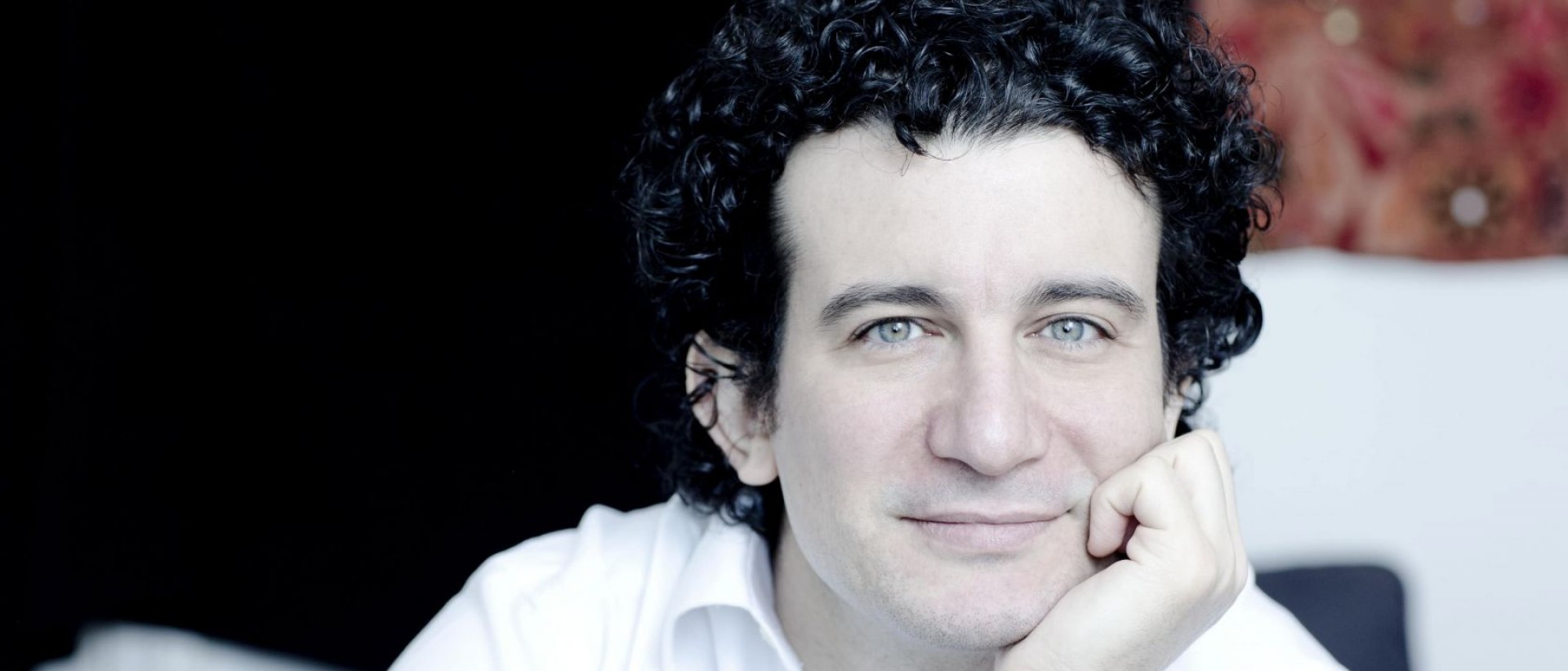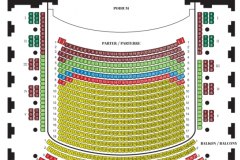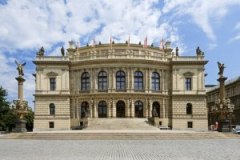Frankfurt Radio Symphony, Alain Altinoglu and Julian Rachlin
Mo | Tu | We | Th | Fr | Sa | Su |
A dream about snowy Finland, where a nymph emerges from one of the country’s thousands of lakes. This is how one could describe Jean Sibelius’ Violin Concerto, a symphonic poem that premiered in the same year as Dvořák’s most famous opera, Rusalka. While equally poetic, Sibelius is timid in the more cautiously constructed melodies, but he also leads all of them to a positive ending. The composition seems so intimate, it is as if every tone of the violin addresses each listener individually. And if the violin player is Julian Rachlin, whose career began at age fourteen – after he won the Concertino Praga and Eurovision competitions – with an invitation from Lorin Maazel to appear as a guest with the London Symphony Orchestra, we can expect an extraordinary experience.
In contrast, the ominous energy of the first notes of Dmitri Shostakovich’s music points out that his Symphony No. 8 follows his famous Leningrad Symphony. Symphony No. 8 was also written during the Second World War and is perhaps even better and more clearly constructed than the Leningrad Symphony. Its journey from darkness to light and victory and its key of C minor recall Beethoven’s Fate. The composer seems to have infused the lucid finale with the belief that victory means more than defending oneself and driving out the aggressors – it also means showing generosity and compassion. Light must shine for everyone in the end. And it will be sparked by conductor Alain Altinoglu, who leads one of the oldest and most respected German radio orchestras, an artist who regularly conducts the Berlin and Vienna Philharmonics, Concertgebouw in Amsterdam and, more recently, also the Czech Philharmonic.
Program and cast
Frankfurt Radio Symphony
Alain Altinoglu - conductor
Julian Rachlin - violin
Jean Sibelius: Violin Concerto in D Minor, Op. 47
Dmitri Shostakovich: Symphony No. 8 in C Minor, Op. 65
Rudolfinum
The Rudolfinum, one of the most noteworthy buildings in Prague, was built between 1876 and 1884 according to the designs of architects Josef Zítek and Josef Schulze. Originally intended as a multipurpose cultural building in Prague, the Rudolfinum was inagurated on February 7, 1885. It carried out its mission until 1919, when it was converted to the House of Commons of the Czechoslovak Republic. Concert activity was restored to the Rudolfinum during the German occupation, but full rehabilitation, particularly of the gallery, did not take place until 1992. After a general reconstruction by architect Karel Prager in 1992, the Rudolfinum became the home of the Czech Philharmonic and the Rudolfinum Gallery.
Dvorana – Ceremony Hall
The central space in the gallery portion of the Rudolfinum was designed by Josef Zítek and Josef Schulz as an entrance hall to the art gallery. After 1918, however, this space was converted into a parliamentary cafeteria, and after World War II it served as a gymnasium for the Prague Conservatory. At the end of the 1980s, Ceremony Hall was threatened with reconstruction – but plans to tear down the main staircase to make room for another concert hall did not go through, and the hall retained its original appearance. Of particular interest in Ceremony Hall are 25 empty spaces on its walls, which were originally intended to be filled in with frescos. The majority of the eminent Czech painters, however, boycotted the 1891 fresco competition in protest over the large number of German artists involved in the construction of the Rudolfinum.
Dvořák Hall
The Czech Philharmonic took the stage in this world-famous concert hall in 1896, performing for its first-ever concert under the baton of Antonín Dvořák himself. The hall remained a space for concerts and performances until 1918, at which time it became a boardroom for the new parliament of the Czechoslovak Republic. The stage and the organ loft became a tribunal (garnished with a statue of President T.G. Masaryk), from which parliamentary leaders presided over proceedings. The hall's original character (and purpose) was restored
in 1940–1942 according to a project conceived by Antonín Engel and Bohumír Kozák, and it has remained in this form through to the present. In accordance with Josef Zítek and Josef Schulz's original proposal, the central visual element in the hall is an organ, which was made in Frankfurt, Germany. During the hall's stint as a parliamentary meeting place, the organ was housed in Brno. When it returned to the Rudolfinum in 1940, its register was extended. Dvořák Hall's final update took place in 1992 when the entire Rudolfinum building underwent reconstruction.
When travelling by public transport, get off at the Staroměstská metro station (Line A), tram stop (trams nos. 17, 18 and 53) or bus stop (no. 207).
Parking is available at the underground parking facility on Jan Palach Square. The facility is not part of the Rudolfinum premises.

 EN
EN DE
DE IT
IT FR
FR ES
ES RU
RU JP
JP RO
RO
 Seating plan
Seating plan 